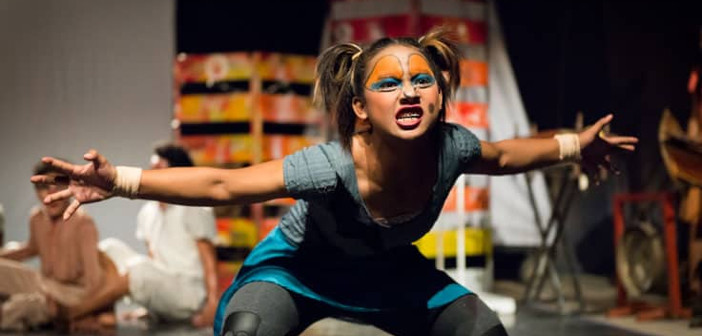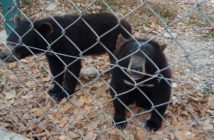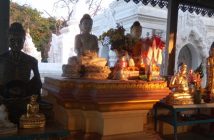After a couple of days in Phnom Penh, we moved on to Battambang. But getting there was not simple.
Rather than take the public bus, we decided to fork out for a private car to take us there. We booked it through our hotel, as we’d had a good experience with their driver the previous day on our trip to the wildlife park.
We were about half way through the six hour drive, and my wife had just won a battle with our younger son to get him to put on his seatbelt… thankfully. It all happened in a second. A bus started to pull out, our driver accelerated – then the bus stopped suddenly, and our car ran into the one in front, ramming it into the back of the bus.
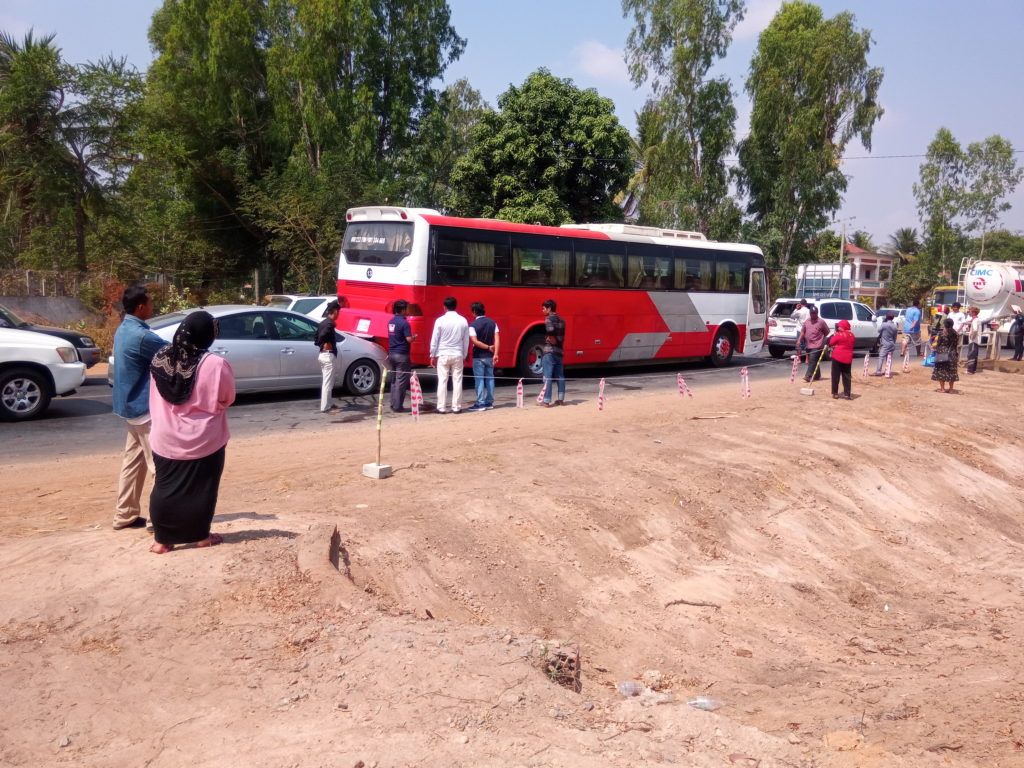
Our car crash was the most exciting event for many a year
As far as I could tell, the bus stopped suddenly because it had hit the car in front, so we were at the back of a four-vehicle pile up. It was clearly the most exciting thing that had happened in the neighborhood for many years, and drew a huge crowd, who were all the more thrilled to see that foreigners were involved.
Our driver (who spoke no English) got out to discuss the situation with the other drivers, while a tailback built up which must have stretched for many miles. We were left sitting in the car with no idea what was happening. After an hour or so, the crowd began to melt away – and with them went our driver.
We phoned the hotel, but the manager denied any responsibility, saying it was just like they’d called a taxi for us. I pointed out we’d paid them, and the receipt was in their name, so what were they going to do about us being abandoned in the middle of nowhere with two children? The manager hung up on me. Shame on you, Khavi Villa.
After another hour or so the driver returned, and we drove off. We insisted he take us somewhere we could eat, and eventually arrived in Battambang, not in mid-afternoon as planned, but in darkness, exhausted and shaken.
The next day looked brighter. Battambang is a charming little town, small enough to walk around, with some colonial-era architecture surviving. We visited the market, and I dragged my family to the old disused railway station, although they were somewhat baffled as to its appeal.
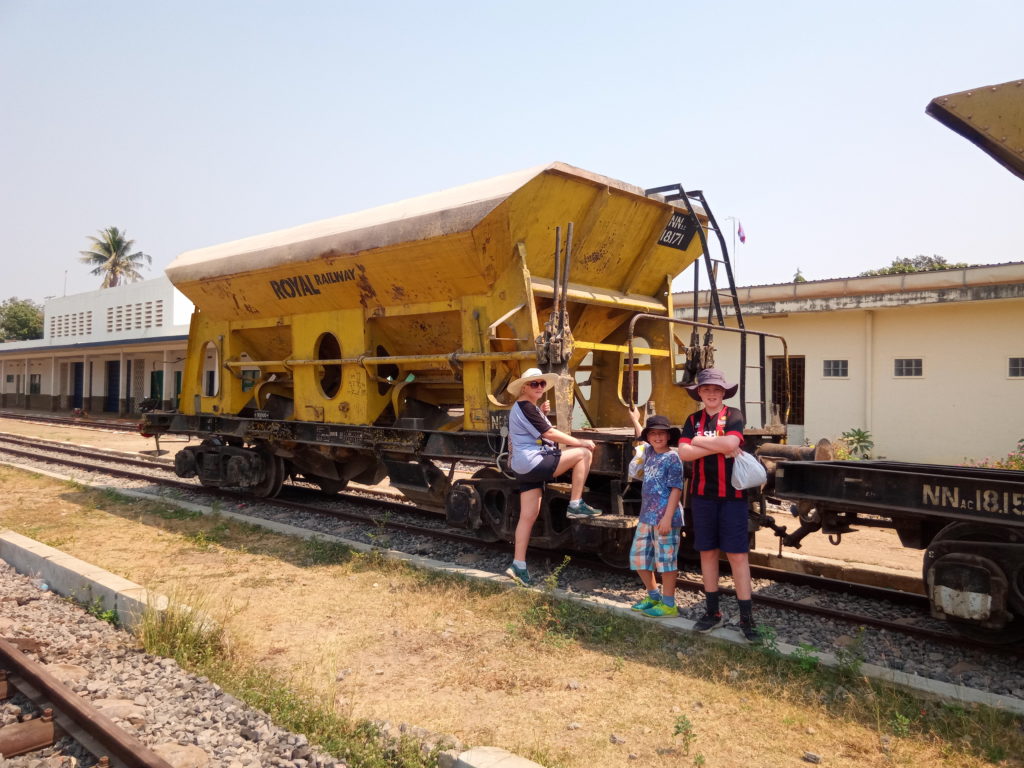
“What exactly are we doing here, Dad?”
Battambang is most famous though for three attractions. We skipped the bamboo railway, as our time was limited, and headed out for Sampeou Mountain, and the Bat Cave.
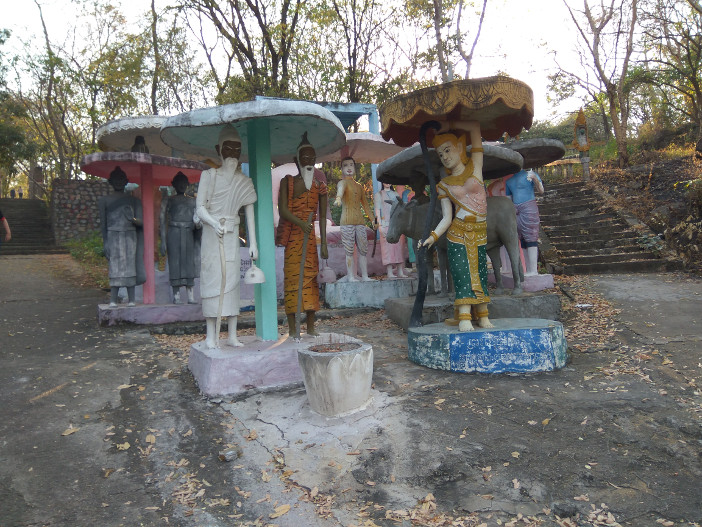
Statues of Buddhist figures dot the slopes of Sampeou Mountain
Sampeou Mountain is a short distance outside the town. We arranged for a tuktuk to take us out there, pick us up, then take us on to our next destination. There are two routes up the mountain, supposedly the steep one and the long one, but to anyone used to Chinese mountains, it’s a gentle stroll up a small hill. Brightly-painted concrete statues of Buddhist figures dot the slopes, and at the top is a temple where wild monkeys gather. (There’s also a cave where horrifying murders took place during Cambodia’s tragic era, but we didn’t seek it out.)
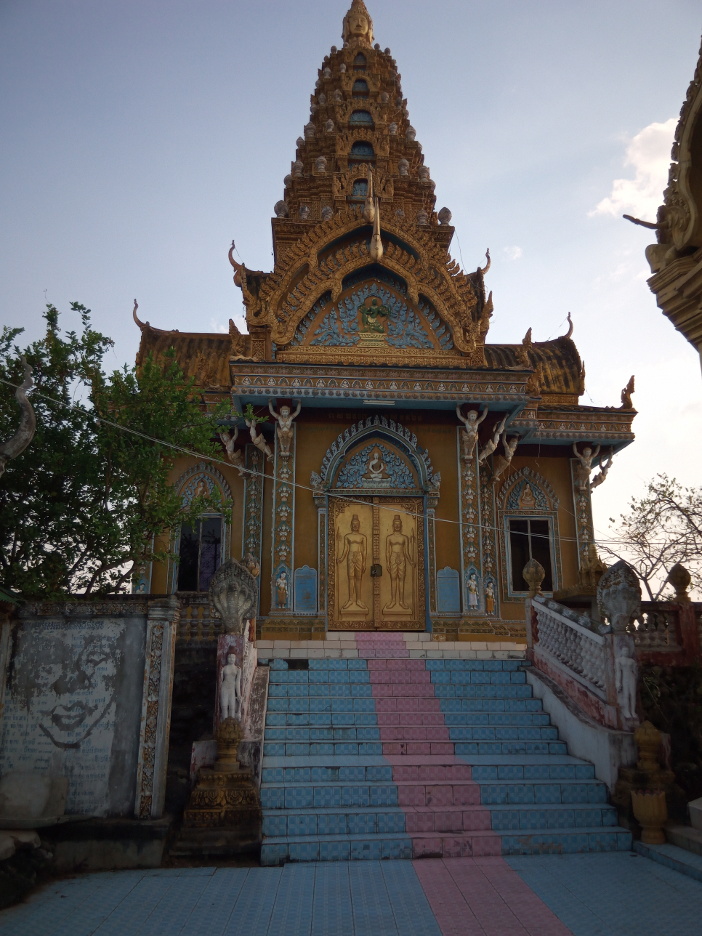
Much of Cambodia’s Buddhist heritage has been rebuilt since the Khmer Rouge era
All this though was really just a prelude to the main attraction: the bats. We took up our station early, knowing we were on a tight schedule to get to Battambang’s third tourist draw in time, and watched the crowds gather.
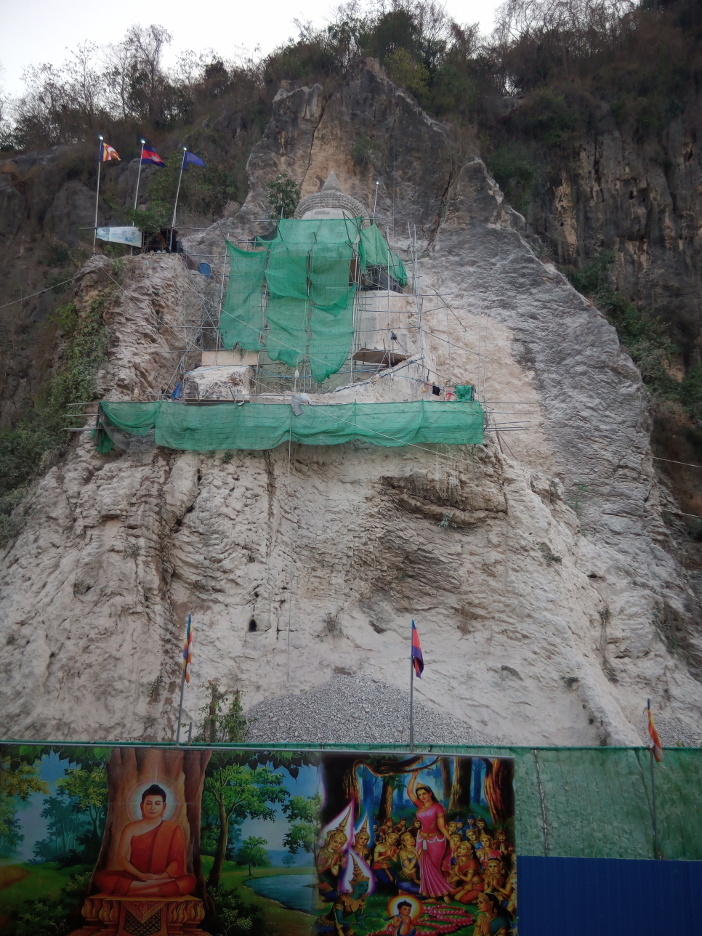
A giant Buddha is being carved into the cliff face. In a few years’ time Sampeou Mountain is likely to be a fully developed tourist attraction
We’d opted for a cafe with a raised platform giving a good view of the cave, though most of the spectators sat at tables along the mountain road. One idiot had brought a drone, but soon had pointed out to him the danger this would pose to the bats. At first I enjoyed the expectation (and the beer and fries), but as the sun disappeared and the bats failed to appear, I became increasingly anxious.
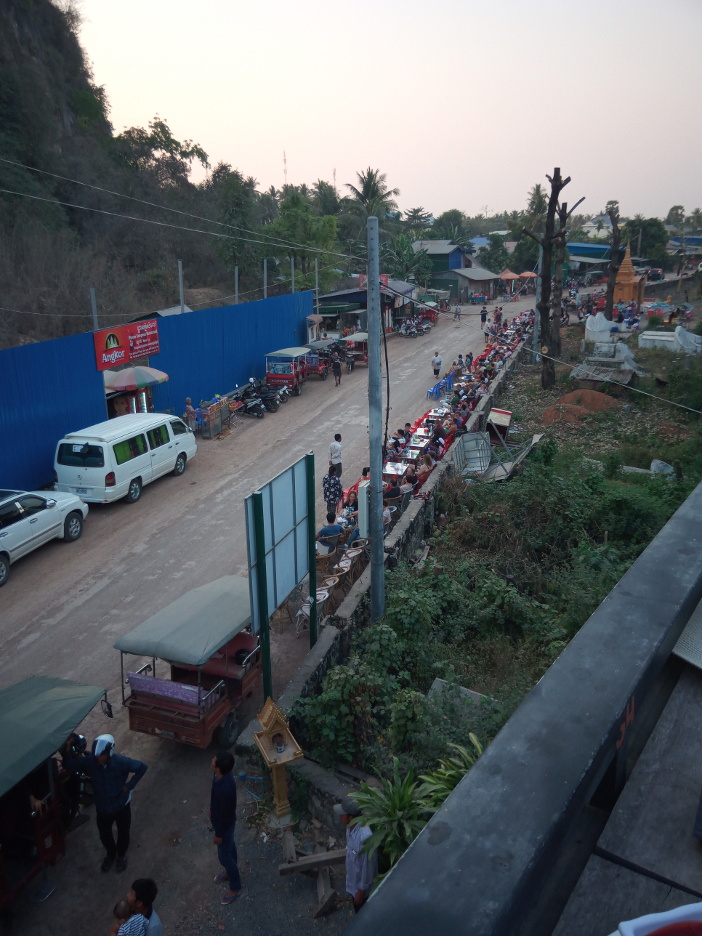
Then suddenly they were there. It’s estimated that around a million bats live in the mountain (I defy anyone to produce a more accurate figure), and at sunset every day they head out en masse, flying up to 40 kilometers away in search of insects to eat. The few seconds of video I recorded cannot really capture the extraordinary spectacle, as clouds of the creatures pour out of the cave and swirl above your head.
(But then, if a video could capture the experience, we wouldn’t need to travel, would we?) It was mesmerizing, awe-inspiring, and my family were not best pleased when I dragged them away after 15 minutes, to go to the circus.
“This had better be good,” my son muttered, as we rattled and bounced over the roads of central Cambodia, trying to arrive at the show in time. We made it with minutes to spare, and tipped our driver accordingly.
To call Phare Ponleu Selpak a circus doesn’t quite do it justice, though the show takes place in proper “big top”. It’s also a social enterprise, providing training for local kids in music, theater, and of course circus skills. It’s sometimes compared to Cirque de Soleil, though it’s nowhere near as elaborate and polished as the world-conquering French company. However, as the picture below shows, it’s a much more intimate experience, with performers only a meter or two away.
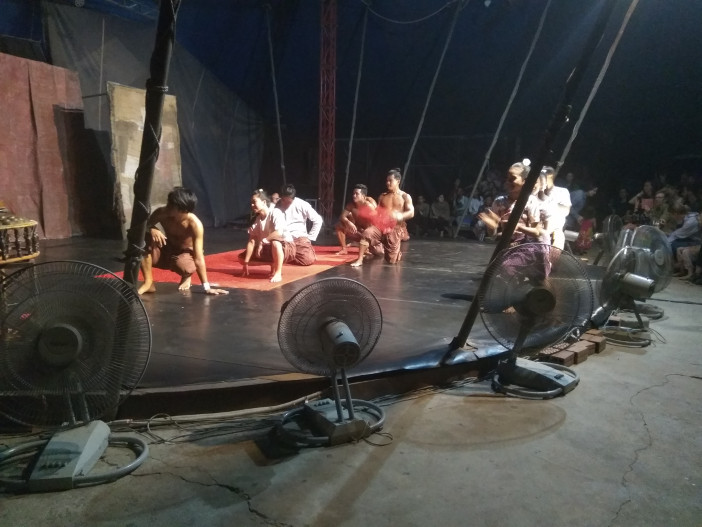
We have no pictures of the actual performance as we spent it open-mouthed and gasping with awe
And what a performance. What the show lacks in polish it more than makes up for in energy, charisma, and sheer joy. If the charm and dazzling skills of the young performers don’t leave you with a big, childlike grin on your face, then you are hard to please indeed.
There’s a story of sorts, but it exists mainly as a framework for extraordinary feats of juggling, balancing, tumbling, and clowning, and at the end the cast all combine to attempt ever more daring leaps and catches. The musical accompaniment is performed live on a mix of western and Cambodian instruments, and the show is preceded by a dance. The excellent work of this non-profit company would deserve your support anyway, but when they leave you so royally entertained, then it’s a must-see experience if you’re visiting the area.
Photos: https://phareps.org/circus/, Andrew Killeen, Karen Killeen

